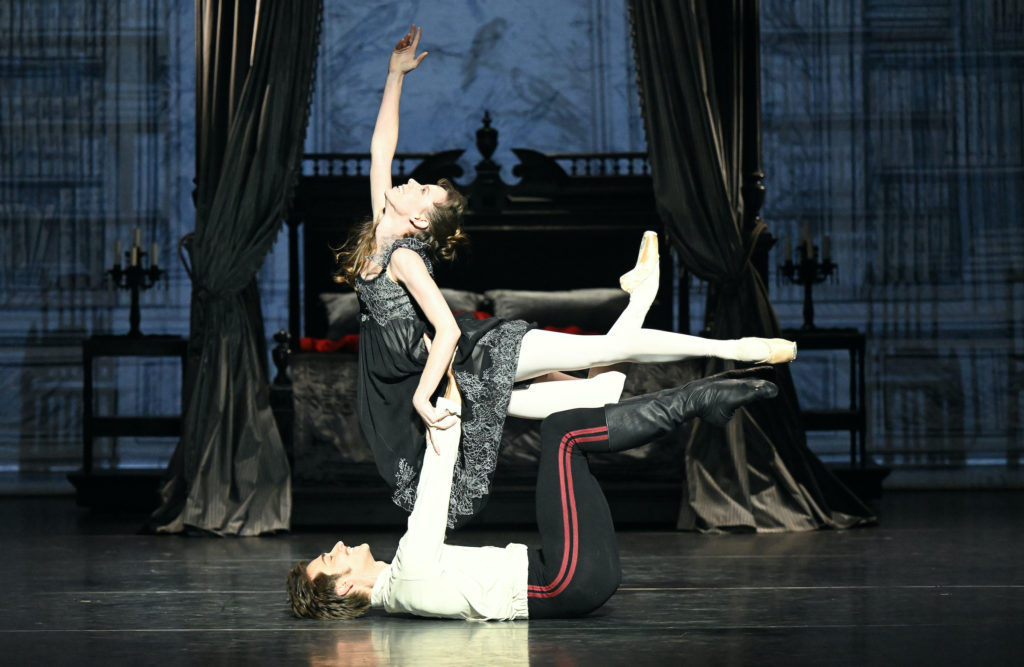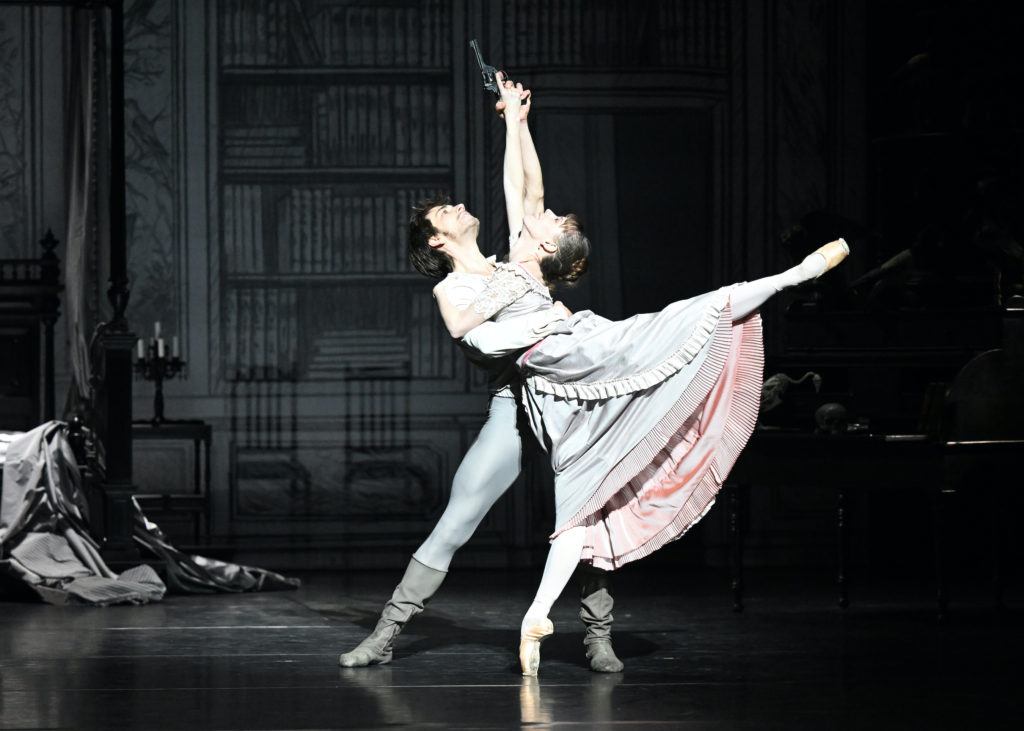Stuttgart’s Mayerling: A MacMillan classic, refreshed and relevant - Vancouver Ballet Society
- Home
- Features 2020 - 2023
- Stuttgart’s Mayerling: A MacMillan classic, refreshed and relevant

By Gary Smith
With his 1978 Mayerling, English choreographer Kenneth MacMillan went to some very dark places to tell a historic story of love, lust, and troubled politics, played out against a fever-pitched passion that threatened a kingdom. Crown Prince Rudolf of Austria, his mistress Countess Larisch, his wife Princess Stephanie of Belgium, and young Mary Vetsera are key characters in this 19th-century dance drama about obsession and intrigue.
When Mayerling was first produced at the Royal Ballet in London, it shocked audiences and polarized critics for its mature storyline and overtly sexual dances that went beyond what most ballet presented — but it also excited many with its ravishing pas de deux and dramatic storytelling.

Now, all these years later, this ferocious three-act work, set to the romantic music of Franz Liszt, has found new life in a reimagined production at Stuttgart Ballet. While it premiered in 2019, some months before COVID struck, I saw the production more recently, in July, at the Stuttgart Opera House on a visit from my home in Ontario, Canada. I had previously seen Mayerling in both London and New York, but that was decades earlier. A new production authorized by Lady MacMillan and championed by Stuttgart Ballet’s artistic director, Tamas Detrich — who had been longing to get MacMillan’s ballet into his company’s repertoire — was intriguing.
“What amazes me is how modern the choreography is and how relevant the story is today,” Detrich told me when we spoke during my visit, referring to its themes of sex and power, and sexual obsession. “I doubt any of the major female characters here love Rudolf, but they are stirred by the position he holds.” But, Detrich added, “what needed re-thinking were the heavy sets and costumes by Nicholas Georgiadis for the Royal Ballet, which looked dated.”

To update the design, he went to iconic Austrian designer Jürgen Rose, whose black and white backdrops for the ballet are translucent when backlit. “This makes the main characters stand out dramatically,” says Detrich, “so we really see the detail of their powerful pas de deux.” The costumes are in every imaginable shade of grey, black, and white, with the main characters distinguished through the addition of vibrant colour accents. For the penultimate scene, “everything around Prince Rudolf has faded to white, which reflects the character’s state of mind and his search for oblivion.”
The period props are all real: “There are no imitations,” says Detrich, “including the 1885 coach, which Rose found in Southern Austria.” The coach is the first thing we see as the curtain rises on a grey cemetery. And it is the last thing we see at the end of the ballet. Used to transport the body of Mary, it is in a sense a death wagon.
Friedemann Vogel and Elisa Badenes, two of the most exciting dance-actors on any ballet stage today, have key roles. Vogel, who plays Rudolf, explains how he approached his character. “I tried to get inside Rudolf’s head, to understand the darkness there, his desires and demons,” he says. “I read books, looked at [historic] photographs and drawings. The more I put the pieces of the puzzle together, the easier it became to understand him. You see, nothing in me is Rudolf so I had to search him out.”

Vogel sees Rudolf as a product of the society he lived in. “The expectations, the etiquette of the court, the politics and the intrigue around him”: these all informed how Rudolf lived his life. “There was no way to separate the prince from the person.”
Badenes, in spite of her character’s complexities, feels she understands Mary Vetsera well. “It takes a lot of physical and mental strength to play her, though,” Badenes adds. “I have to establish her character and her emotions in a very short time.” The fact that the story is real “affects me most,” she says. But what she cannot relate to is that “this 17-year-old girl was willing to die, to let her lover shoot her.”
Badenes is impressed with the way Vetsera knew what she wanted and was able to express her sexuality, unusual for a young woman of the time. “For me, she has a kind of feminist streak. She seems to be breaking the rules and is confident about what she is doing.” Vetsera, as presented in the ballet, did not agree to Rudolf’s suicide pact out of despair or depression, she believes, “but out of love.” Not that it makes her death any easier to accept. “I do go home devastated and empty after each performance. When I am alone and trying to sleep it all comes back to me.”
“I could not have danced this role 10 years ago,” Vogel says. “Dancing this ballet has, in fact, redefined me. Its challenges have made me stronger in every way. There are lots of solos, and seven pas de deux, and every pas de deux is so nuanced and so different. That is the genius of MacMillan.”
Mayerling was danced by Stuttgart Ballet with dramatic depth and powerful athleticism. Watching Badenes and Vogel connect with the passionate choreography of MacMillan’s ballet is to understand how two gifted dancers and a stylish design can breathe new life into a ballet. And no one makes better pas deux moments than Sir Kenneth MacMillan.

